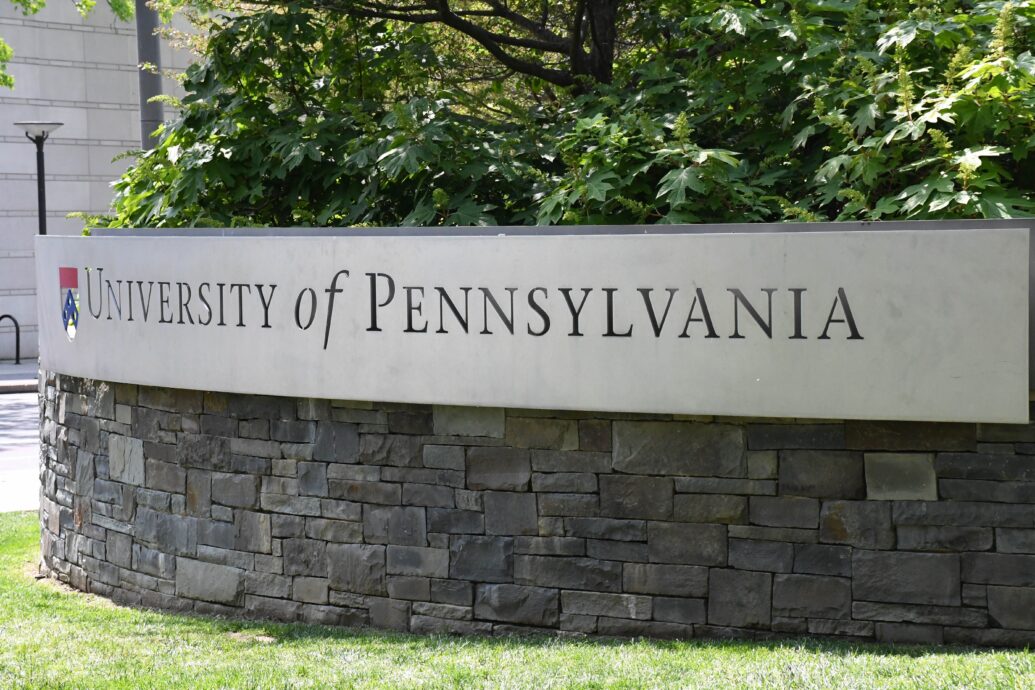To justify the liberal arts, we have to use language deeper than utility.
The Donor's Limited Power
After only a year and a half in the role, Liz Magill resigned as president of the University of Pennsylvania (Penn). The resignation followed her appearance at a congressional hearing concerning antisemitism at Penn, the Massachusetts Institute of Technology (MIT), and Harvard University, and a subsequent apology video that seemed to reverse the statements she made at the hearing. The perceived spinelessness of her actions effectively ended her presidency. Coming on the heels of donors’ vocal withdrawal of financial support from the university, it was the final blunder in the saga of mishandling the response to the Hamas attack on Israel and the appearance of the controversial Roger Waters at Penn’s Palestine Writes Literature Festival.
The donor outcry and the congressional hearing have put Penn at the epicenter of ongoing tension between alumni donors, administrators, trustees, and faculty. After donors began announcing the withdrawal of their gifts, faculty members characterized their actions as attacking academic freedom. The faculty’s criticism as well as news coverage of this controversy represent a grave misunderstanding of how colleges operate, especially when it comes to fundraising. And, as always, oversimplification further muddles discourse around a challenging topic in a volatile time.
The appropriate role of donors in higher education is contested. Faculty are sensitive to protecting academic freedom. Not surprisingly, the Penn Faculty Senate Tri-Chairs released a statement once donors began withdrawing pledges. They wrote, “Let us be clear: academic freedom is an essential component of a world-class university and is not a commodity that can be bought or sold by those who seek to use their pocketbooks to shape our mission.” The Penn chapter of the American Association of University Professors also claimed that donors’ influence was having a chilling effect on academic discourse. But the actual power dynamics at play are not quite how they might appear.
In reality, faculty are only one part of the complex network of administrators, students, and staff that constitute a university, not to mention the outsized role of accreditation agencies, federal Title IX requirements, state legislatures, and college ranking systems. Painting a picture of donors as the covert dictators running the college grossly underestimates the responsibility of university administrations and development offices in accepting and, in fact, proposing major gifts, as well as the size of philanthropy in the operating revenue of the institution. Donors can also withdraw pledges, though this is not usually a shared decision with the university. Both giving and not giving are powerful statements, and donors face criticism for both.
Donors have two primary forms of influence: philanthropy and reputation. Targeted, or restricted, giving can incentivize institutions to lower tuition and support certain subjects that may not currently be in vogue, like the humanities in a culture obsessed with technology. The public also pays attention when major gifts are made, or more rarely withdrawn. Thus, donors can spotlight ethical and intellectual breakdowns on campus and identify when universities are moving out of step with the American public. These are both powerful tools, but neither can really be characterized as compromising academic freedom, particularly in light of how higher education philanthropy functions.
Colleges may differ on the details, but they have a predictable development system, especially for major gifts—those in the range of $500,000 to $5,000,000 to $300,000,000, if you are Harvard. Major gifts are rarely a complete surprise. They come after years of cultivating a relationship between the donor and the development office. During this time, several iterations of the gift are discussed by the university and the donor. A proposed gift is reviewed by legions of university lawyers, run through the board of trustees or advisors, and heavily reviewed by university administrators. Schools with large endowments, like Harvard and the University of Pennsylvania, have enough funds that the fear of intimidation borders on absurd. It is like having a full-time job when your parents threaten to cut off a $5-per-month allowance.
CNN’s Nathaniel Meyersohn writes, “Gifts for specific purposes, known as restricted gifts, are growing. These restricted agreements are enforceable by law.” A more accurate statement is that these restricted agreements can be enforceable by law under a highly specific set of circumstances if they include a clause retaining donor standing (the right to sue should the gift be misused) and even then, only if the state’s attorney general office gets involved. Often, the attorney general will only step in if the violations are egregious, like Princeton University siphoning funds from the Robertson family’s gift—the subject of a lawsuit settled in 2008.
Philanthropy is a unique and appropriate opportunity for anyone, whether in or outside of academia, to direct the course of a beloved college or university.
In fact, large institutions face little to no external accountability for how they manage their finances. UPMIFA, the Uniform Prudent Management of Institutional Funds Act, is one of the only guiding pieces of legislation, and its primary purpose is to limit spending from the endowments so that the capital is not depleted too quickly, thus shortening the life of the institution. It does not regulate how that endowment is spent, a decision that is up to each university budget as determined, usually, by the board of trustees.
Mr. Meyersohn’s reporting reflects a common misconception about university budgets, that restricted gifts significantly burden colleges. He writes, “More donations are coming with strings attached, rather than letting schools spend their donations however they want. That means that some colleges have major needs that are not being addressed because of where big donors want to direct their money.” This seems reasonable, except for the matter of endowment sizes and college budgets at major institutions coupled with the difficulty of enforcing restricted gifts.
With an endowment the size of $21 billion, Penn is far from being forced to take any check. In fact, only 5% of its operating revenue comes from donors. Its major revenue sources include tuition and fees, investment dividends from the endowment, and income from other services. Philanthropy does matter, but if a university is planning to meet major needs with only 5%, universities need to pivot, not donors.
High-profile donors, along with the general public, have another tool—reputation—that can have powerful results, as seen in President Magill’s resignation and the heightened scrutiny of Claudine Gay at Harvard. Some of the Ivies have seriously miscalculated their response to the Israel-Hamas conflict, culminating in the recent congressional hearing.
Penn faculty are right to warn against donors giving gifts that violate academic freedom, but they are wrong to construe donors’ responses as akin to requesting authoritative oversight of syllabi or handpicking specific faculty for tenure. At Penn, donors are behaving as gadflies disagreeing with a course of action rather than bullies. However, the faculty response raises the excellent question of who can speak to the running of a college. Is it the united forces of administration, faculty, and staff, or do students also have a responsibility? Can alumni have a voice once they graduate, or are they now irrelevant to the functioning of the institution that formed them?
Samuel Palmer Brooks, president of Baylor University from 1899–1931 and my great-great-grandfather, wrote an address to the graduating class of 1931 that speaks to alumni responsibility. He said, “Because of what Baylor has meant to you in the past, because of what she will mean to you in the future, oh, my students, have a care for her. Build upon the foundations here the great school of which I have dreamed, so that she may touch and mold the lives of future generations and help to fit them for life here and hereafter. To you seniors of the past, of the present, of the future I entrust the care of Baylor University. To you, I hand the torch.” This speech, written on his deathbed, is recited each commencement, reiterating that alumni’s responsibility towards the institutions that form them does not cease when they move off campus.
Events at Penn and Harvard caused donors to walk away from giving to these storied institutions. Perhaps President Magill’s resignation will inspire donors to return, but those who truly want their gifts to have a long-lasting impact should consider giving elsewhere. A $3,000,000 gift is relatively insignificant to Harvard, but transformative for smaller institutions, like many Historically Black Colleges and Universities, regional colleges, or schools under threat of closure like Magdalen College of the Liberal Arts. Donors must be mindful of not overstepping into curricular decisions or demanding tenure for a favorite faculty member, but development offices are well-versed in helping donors match their vision to the university’s needs.
Philanthropy is a unique and appropriate opportunity for anyone, whether in or outside of academia, to direct the course of a beloved college or university. Donors, particularly alumni donors, give because they care about the future of an institution. They carry that torch along with the faculty, administration, students, and staff. The purpose is not to burn an institution down, but to restore the promise of colleges and universities to provide students with a high-quality education that prepares them to be engaged citizens and successful in their careers, without crippling them with debt. Neither institutions nor donors are perfect, but they can, and should, make each other better.



